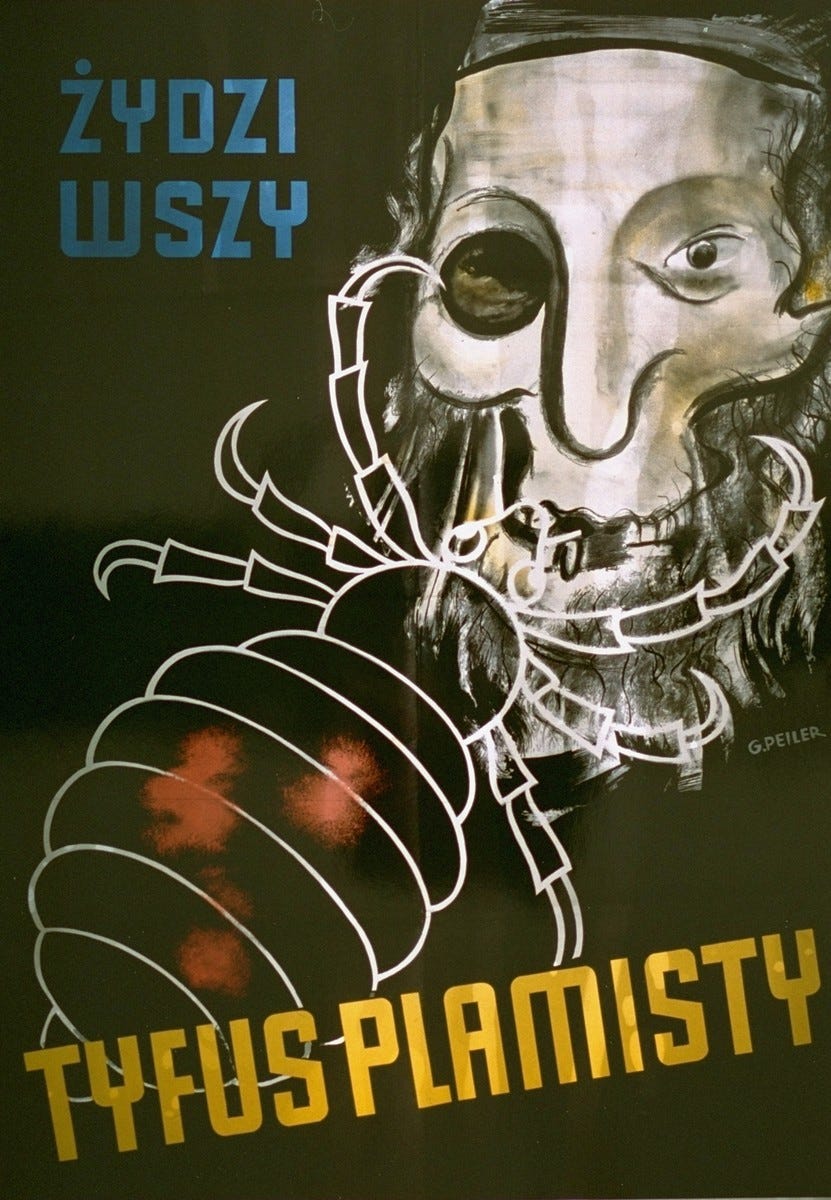From the start of Trump’s political career, I was alarmed. To be sure, he had dabbled in public racism earlier, but it was when he announced his candidacy in 2015, and made his first campaign speech, that I became very concerned. As described in this talk that I gave in Mexico in 2019 (and in other publications and presentations), the style of Trump’s rhetoric—the precise sequence of emotionally-loaded themes—seemed to be a page taken right out of the Nazi playbook.
To be clear, I never thought that Trump was directly influenced by Nazi speech. It seemed much more likely, I thought, that, like Hitler himself, Trump had a gut instinct for the kind of language that plays on the public’s deepest fears, resentments, and aspirations. I held onto this assessment even when I learned that Trump’s former spouse Ivanka told her lawyer that he kept a book of Hitler’s speeches near his bed.
But now I’m not so sure….

I’m not so sure because the former president used expressions in recent speeches that are specifically and unmistakably redolent of Nazi rhetoric.
In a video interview posted on the conservative website National Pulse on September 27, Trump had this to say about undocumented immigrants entering the United States:
“Nobody has any idea where these people are coming from, and we know they come from prisons. We know they come from mental institutions and insane asylums. We know they’re terrorists. Nobody has ever seen anything like we’re witnessing right now. It is a very sad thing for our country. It’s poisoning the blood of our country. It’s so bad, and people are coming in with disease. People are coming in with every possible thing that you could have (emphasis added).”
A week later, MSNBC’s Mehdi Hasan remarked on X that Trump’s reference to blood poisoning was a “straight-up white supremacist/neo-Nazi talking point.” Hasan was right.
The theme of racial blood-poisoning1, and the idea that racial outsiders are vectors of deadly, contagious disease, was a mainstay of Nazi (and neo-Nazi) discourse.

Hitler described the mixing of racially pure Germans with non-Germans as a “poisoning.” The Jew, he wrote in Mein Kampf, “poisons the blood of others” and described them as “international poisoners”and expressed the view, as summarized by Felicity Rash in her book The Language of Violence: Adolf Hitler’s Mein Kampf, that “it was inevitable that these ‘lower’ beings would try to poison the ‘higher’ Aryans or to develop a parasitic dependency upon them.” According to Hitler, this poses an existential threat because “All great cultures of the past perished only because the originally creative race died out from blood poisoning.” Because blood-poisoning caused Germany to become diseased at the instigation of Jews, and the Marxists under their control, Hitler characterized Jews and Marxists as a “plague” or “epidemic” that is “worse than the Black Death of olden times.”

In fact, we can find such references in My New Order—the book that Trump allegedly kept near his bedside.
“Insofar as we devote ourselves to the care of our own blood—that blood which has been entrusted to us by destiny—we are at the same time doing our best to safeguard other peoples from diseases that spring from race to race, from people to people.”
On the same day that the National Pulse interview was aired, Trump gave a speech in Michigan, near Detroit, courting the political favor of non-union automobile manufacturing workers. The speech is loaded with fascist-style rhetoric. He described Joe Biden as a “wretched old vulture trying to finish off his prey.” On the face of it, this was a peculiar image, as vultures are scavengers, not predators, but it was rhetorically well-chosen, combining denigration of Biden’s age with a bird associated with death, disgust, and decay. “Under Biden,” Trump claimed, “instead of economic nationalism you have ultra-left-wing globalism.” The term “globalists” (and it’s cognate “globalism”) is a far-right dog-whistle referring to the supposed international Jewish conspiracy. It is a semantic descendant of the Nazis’ term “rootless cosmopolitans” which targeted Jews and their Marxist fellow travelers.
The vulture, Biden, is also a vampire who has “backed every single blood-sucking attack on US auto workers.” References to vampirism and parasitism—ultimately derived from the Medieval conspiracy theory that Jewish people consumed the blood of Christian children2 —were standard Nazi rhetorical fare. As Rash summarizes, when Hitler wrote about Jews,
Blood sucking creatures, parasites, and microscopic organisms appear in a number of guises, and are obviously intended to provoke revulsion in the reader….Hitler readily adopted images of parasitism, claiming that the Jewish parasite had to be destroyed if the host were too survive.
After his speech in Michigan, Trump granted an interview to Newsmax during which, when asked about migrants crossing our border from Mexico, he responded that Democrats are “Marxists, communists, fascists” who are allowing border crossings that are “killing our country, they’re destroying the blood of our country.” Again, the poisoning and destruction of blood is a distinctively Nazi trope.
I am not suggesting that Trump is a Nazi, or that he embraces an anti-Semitic ideology. Rather, I am suggesting that in light of his specific choice of imagery, the claim that he is influenced by Nazi rhetoric should not be dismissed out of hand.
David Livingstone Smith is Professor of Philosophy at the University of New England in Maine. He has published nine books, including On Inhumanity and Less Than Human, which won the Anisfield-Wolf Book Award for contributions to the understanding of racism and appreciation of diversity. This post originally appeared on his Substack.
- See Chapter Three of my book Making Monsters: The Uncanny Power of Dehumanization for a discussion of the role of “blood” in racial discourse. ↩︎
- See, for example, Masha Teter’s Blood Libel: On the Trail of an Antisemitic Myth. ↩︎
